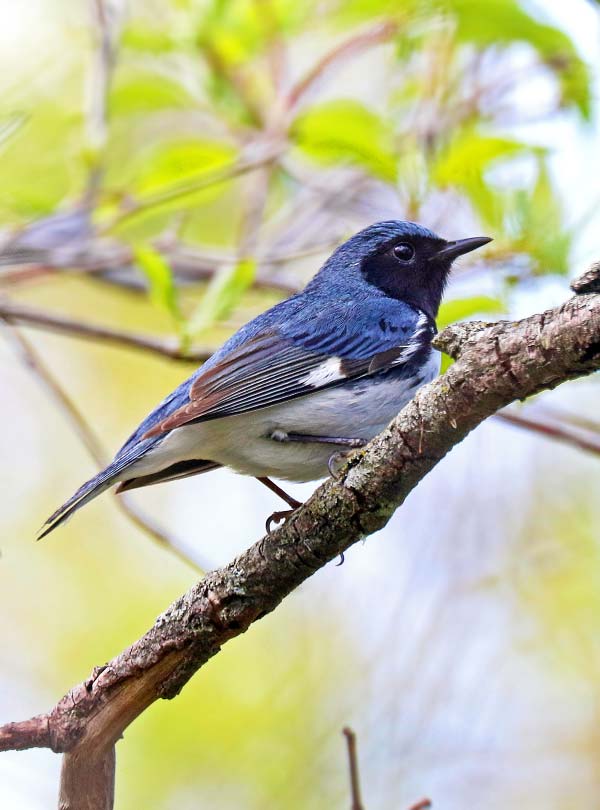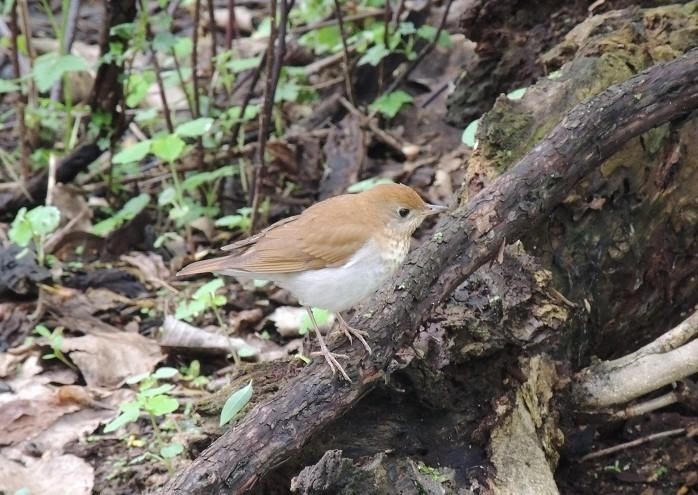BIRDING DUPAGE
DuPage County Hotspots
DuPage County enjoys an amazing “greenbelt,” which includes 145 miles of Forest Preserve trails, numerous community parks, Fermilab Natural Areas, the lovely Cantigny Park and Morton Arboretum, and more. These sites include woodlands, shrublands and grasslands, riparian habitats, gorgeous marshes, and rare fens. Approximately 290 species of birds have been recorded in the area as residents and migrants. Whether you are resident or visitor, we invite you to explore our county and enjoy its bountiful birding and beautiful terrain.
The just-launched Birding Hotspots feature identifies some of the birdiest sites in the county. We have enlisted club members with deep knowledge of particular sites to help us get the most out of a visit—when to go, how to work the trail system, what birds we might find in what season and locale, and what conditions we might encounter.
For a useful history of the landscape of the county, check out The DuPage River Basin: An Inventory of the Region’s Resources. This is a publication of the Illinois Department of Natural Resources providing fascinating context for the birding experience in our region. Those interested in water quality and habitat restoration efforts along both branches of the DuPage River and Salt Creek can get involved with the DuPage River Salt Creek Workgroup (DRSCW), which has developed and implemented a plan that will promote water quality standards and designated uses for these local watersheds.
For accessibility information for hotspots all over the world, check out the work-in-progress Birdability Map from National Audubon and Birdability.org.
New Birding Hotspots will be added over time as we build out this feature. For now, here is our debut site, in alphabetical order, click on the site names for more information:
Cantigny Park
Features open woodland, small wetlands, ponds, constructed native prairie, display gardens, cultural attractions, and golf course in a lovely park setting. Red-headed Woodpeckers, Wild Turkeys, and Purple Martin colony are highlights
Churchill Park
With its trails and marshes, an ideal place for a short visit or to take children and beginning birders.
Churchill Woods Forest Preserve
A diverse site featuring hardwood forest and marshes along the East Branch of the DuPage River, picnic areas, and the Churchill Prairie Nature Preserve, an Illinois Nature Preserve recognized as an Area of Special Importance by the Illinois Nature Preserve Commission.
Cricket Creek Forest Preserve
Partially wooded running along Salt Creek, including three small lakes, a great site for migrants and summer residents.
Dean Nature Sanctuary
A hidden gem along the Salt Creek, featuring oak savannah, wetland, pond, and prairie; bordering Bemis Woods North.
Fermilab
Expansive site with grasslands, prairie, shrubland, lakes, and woodlands. Excellent waterfowl and shorebird habitat in migration. Abundant sparrow species in late summer and fall. Nesting eagles and osprey.
Greene Valley Forest Preserve
Offering a variety of habitats, with lots of shrublands and deciduous forest. Excellent site for shorebirds. Best site in county for raptor migration viewing in spring and fall.
Hawk Hollow Forest Preserve
One of the largest unbroken blocks of grassland in DuPage County and a good place to find sparrows and other grassland species; includes grassy meadows, mature woodlands, and fens.
Hawthorne Hill Woods, Woodridge
Hawthorne Hill Woods (called Hawthorne Hill Park by eBird and Google Maps) is a wild place hidden in a well-groomed suburb. This little visited 71-acre municipal park is dominated by its woodpecker-rich woods. It attracts a wide variety of resident, breeding, and migratory birds, including spring warblers.
Herrick Lake Forest Preserve, Wheaton
Most of the preserve is a combination of mature forest, scrubland, and fields, with some pothole ponds and marshes. Herrick Lake itself is evident from both entrances and is surrounded by an easy-to-walk and well-travelled path. Trails in the preserve’s interior, away from the lake, are quieter and often better for birding, but migrants and local birds are plentiful around the lake as well as parking lot areas, making Herrick Lake a good choice for quick access to birding.
Hidden Lake Forest Preserve
Dominated by water features and offering woodland, shrubland and marsh for good sighting of waders and other water birds and woodland species. Excellent for migrants.
Lambert Lake Nature Preserve, Glen Ellyn
The three-acre Lambert Lake is surrounded by shrubby woodland, which volunteers
have been clearing out. Cattails emerge in shallow areas, and water lilies cover a large
area of the lake in warmer months. A grassy area and a sumac thicket occupy an area south of the lake. Finally, there is a smaller pond just north of the sports fields. Despite a heavily disturbed habitat, a surprising number of species frequent this small overlooked preserve.
Lincoln Marsh Natural Area
Dominated by two large marshes and surrounding oak woodlands, a small site that is good for both migrants and resident birds.
Lyman Woods Forest Preserve
Oak woods, prairie and marsh, with more than 205 species reported, including excellent migrant traffic. Good birding year-round.
McDowell Grove Forest Preserve
Featuring mature woodlands, open fields with patches of scrub, and floodplain forest. Known as a migrant passerine stop, rich with warblers, thrushes, woodpeckers, and other migrants in spring and fall.
Meacham Grove Forest Preserve
A large but under-birded preserve with woodland groves, meadows, wetlands, the meandering Spring Brook Creek, and the Meacham Grove Nature Preserve.
Salt Creek Park
Secondary growth woodland that is dominated by oaks and hickories with a small, open meadow; one of the best sites for migrants in the northeast part of the county.
Seager Park
A 30-acre hidden gem located close to downtown
Naperville, Seager Park features an oak-hickory
savanna, a ravine, and sycamore-maple woods with an
ephemeral pond.
Springbrook Prairie Forest Preserve
The premier spot for grassland and shrubland birds in DuPage County, including elusive Clay-colored Sparrow. Excellent for a range of nesting marsh birds as well. The only site in the county for nesting Harrier and Short-eared Owl.
St. James Farm Forest Preserve
The 595-acre St. James Farm Forest Preserve in Warrenville is the former retreat of the McCormick family. It contains more than 100 acres of woodlands, prairies and wetlands set among outbuildings that once supported the McCormick family’s equestrian and dairy operations.
The Morton Arboretum
A destination in itself, featuring a world-class plant collection, gardens and 900 acres of woodlands, prairie, meadows, lakes and streams.
Warrenville Grove Forest Preserve
Nestled between Blackwell and St. James Farm, 127 acres of rolling topography featuring floodplain, fens, upland woodlands, and the West Branch of the DuPage River.
Waterfall Glen Forest Preserve
One of the most ecologically significant preserves in the county, features an oak savannah home to Pileated Woodpeckers and Barred Owls as well as extensive shrubland, riparian habitat, and woodlands that have hosted many rarities.
West DuPage Woods/Elsen’s Hill
The best place in DuPage County to see a range of warblers during spring and fall migration. These have included Golden-winged Warbler, Hooded Warbler, Black-Throated Blue, Connecticut and other rarities. Trails cross woodland, marsh, shrubland, and riparian habitats.
York Woods Forest Preserve
York Woods is a small gem of a forest preserve located in eastern DuPage County just southwest of the York Road and Roosevelt Road intersection. It was the very first forest preserve in the county.
Black-throated Blue Warbler.
Photo by Joe Suchecki.
Veery at McDowell Grove.
Photo by Denis Kania.



